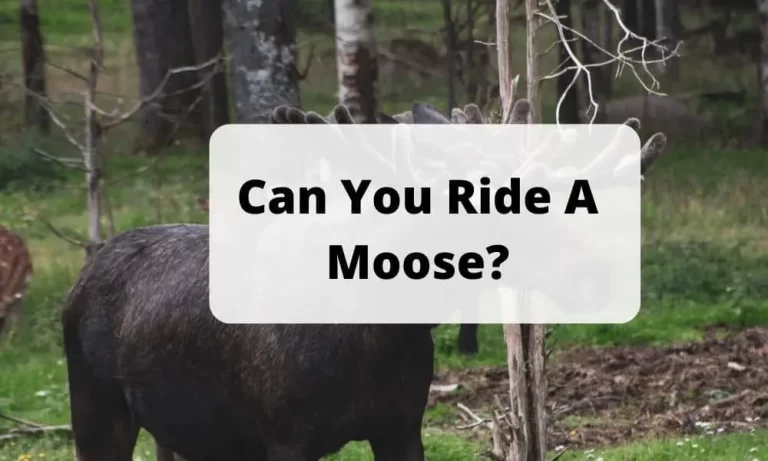How Much Does a Moose Weigh? Learn About the Size and Weight of These Majestic Animals
The moose is the most weighted and North America’s largest and heaviest land mammal and the most prominent and tallest member of the deer family. They have a wide antler that can be either “palmat” or “cervine” in shape, depending on where they live or on their subspecies.[acf field=”Schema”]

Did you know that moose have thick, dark brown fur covering their big bodies? Their fur is really special because it helps keep them warm in cold weather. The topcoat of their fur is hollow, which helps them stay warm, and their dark brown inner fur keeps snow and ice away from their bodies. Moose can be found in places like Alaska, Canada, and the northern United States. They like to live in areas where they can easily find water to drink. In this article, we’ll learn all about the different types of moose and how much they weigh!
How Much Does a Moose Weigh?
The ideal weight (when all of the subspecies of moose are considered) is 400 kilograms. Males typically weigh between 360 and 700 kg, whereas females usually weigh between 200 and 490 kg, depending on the species.
Male moose are generally heavier than their female counterparts, weighing 40% more than the females. The mass of individual subspecies within the broader moose group can vary significantly depending on their size and distribution.
How Big is Moose?
Moose are some of the biggest land animals in North America and they’re part of the deer family. Grown-up moose can be as tall as 2.3 meters! The male have really fancy antlers that can be up to two meters long from end to end. The antlers of male moose are fancier and bigger than the antlers of female moose.
You can find the world’s most giant antlers on this species. Every year, they shed and regrow. Overall, males can grow to a length of 3.2 meters, while females can reach a maximum of only 2.4 meters in height. From 360 to 600 kg, males are heavier than females.
An adult moose’s coat can be anywhere from a pale shade of brown to nearly black. Long, hollow hair strands of 15 to 25 centimeters in length provide exceptional thermal insulation. Moose also has a long head with a long, flexible snout and upper lip, which distinguishes them. A dewlap of skin covers the throat of a moose.
How Big and Weighted Ancient Moose Was?
Libralces gallicus, a species of moose that flourished 2 million years ago in warm savannas, was the earliest known moose. Reportedly Libralces gallicus weighed twice as much as an Alaskan moose. Compared to the present moose’s head and body shape, which had a lengthier and slimmer muzzle, making it look more deer-like than the ancient one. Their antlers, which extended horizontally and could reach a length of 8 feet, were their most striking characteristic.
According to scientists who have studied their heads and necks, they fought with high-speed impact instead of clashing horns.
Services latifrons, the largest known deer species, lived between 1.2 and 0.5 million years ago. This gigantic animal was highly similar to the contemporary moose that we see today, and some were reported to exceed 8 feet at the shoulder in length. Its average weight was 2,200 pounds, but the heaviest Cervalces latifrons weighed 2,600 pounds, making it the same size as a current male American bison, only taller.
How Much Do European Moose Weigh?
All of these countries are home to populations of European moose. A European moose can weigh anything from 200 to 400 kg when fully grown. Between 441 and 882 pounds, the total weight of a European moose can be found in this range.
How Much Does A Northwestern Moose Weigh?
The Northwestern moose, or Western moose, can be found east and south of the Alaskan mountain range. Arctic Canada, the western provinces of Canada, and a smattering of western North America are included in this category.
Boreal and mixed deciduous forests are home to these creatures. A northwestern moose has a weight ranging from 270 to 720 kg.
Average:
- Female northwest moose weigh 295 kilograms, or 650 pounds, on average.
- These moose weigh an average of 1169 pounds, making them the heaviest male in the region.
- There is an average weight of 475 kilograms or 1047 pounds for a northern moose.
How Much Does An Eastern Moose Weigh?
Eastern Canada, New England, and upstate New York make up most of the Eastern Moose’s habitat range. These species occur in both mixed deciduous and boreal forests. Moose can weigh anything from 270 to 420 kg, depending on their roaming area. An eastern moose can weigh between 595 and 926 pounds at full maturity.
Average:
- Male eastern moose weigh an average of 365 kg or 1398 pounds.
- Eastern moose females typically weigh around 270 kilograms or 595 pounds.
- An eastern moose weighs an average of 662 pounds.
How Much Does A Shiras Moose Weigh?
All in the Rocky Mountains of the United States and Canada, you can find Shiras, moose in abundance. It is where they can be found in the region’s boreal and mixed deciduous woods.
The shiras moose is the tiniest of North America’s four moose subspecies. The total weight of a shiras moose ranges from 200 to 360 kg. The overall weight of a shiras moose ranges from 441 to 794 pounds in pounds.
Average:
- Shiras moose males often weigh 639 pounds or 290 kilograms.
- There is an average of 573 pounds of weight in the female Shiras moose.
- A shiras moose’s average weight is 240 kilograms or 529 pounds.
Read More About Moose Antlers Here.
How Much Does An Alaskan Moose Weigh?
Alaskan moose, or giant moose: also known as Yukon moose in Canada, have ranges spread across Alaska in the United States and some parts of western Yukon in Canada.
The Alaska moose is the largest of the four North American moose subspecies. From 270 to 780 kg, the average weight of an Alaskan moose in the wild is From 595 pounds to 1720 pounds; the total weight of an Alaskan moose can be determined by its body mass.
Average:
- Male Alaskan moose weigh an average of 634 kg or 1398 lb.
- A female Alaskan moose’s average weight is 340 kilograms or 750 pounds.
- Alaskan moose are large animals, weighing in at an average of 485 kilograms (1,069 pounds).
How Much Do Moose Antlers Weigh?
Each moose species has a different antler size and weight, which varies by subspecies or geographic region. The Alaskan subspecies of moose has the heaviest and biggest antlers of any North American moose. The typical width span is less than 200 centimeters (80 inches).
If you’re a fan of big horns, you’ll be pleased to know that the giant antler ever reported was that of an Alaskan deer that weighed in at roughly 36 kilograms (79 pounds). The antlers of North American moose are typically palmate, with a primary palm and brow palm arranged in a butterfly shape.
The northernmost European moose populations have palmate-patterned antlers, while the southernmost populations have smaller cervina dendritic-patterned antlers. In the north-south range, moose typically have antlers with a palmate-cervina dendritic pattern sandwiched between them. Another variety of Eurasian deer is the cervine-shaped deer with no palmers, which is more like European deer than the palmate-patterned deer.
Conclusion
We hope you get to know how much a moose weighs—all Living species of moose on the earth in this blog. So, moose has the potential to grow to tremendous proportions. On average, moose weigh 1,000 pounds and are 6 feet tall. They are New Hampshire’s largest land mammal. Moose have nearsightedness in addition to their incredible sense of smell and hearing.
Related Posts:





